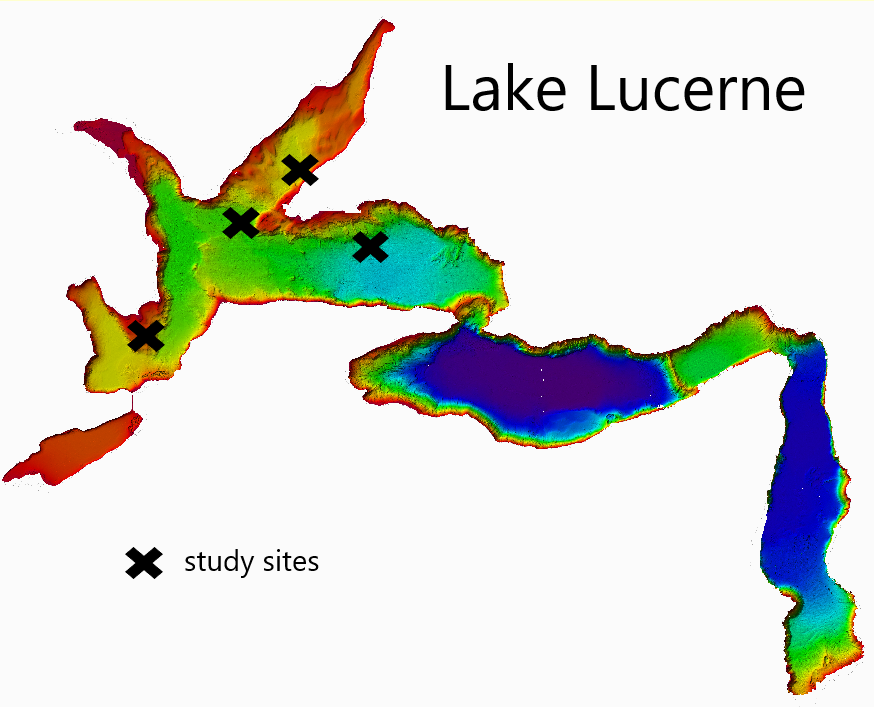ESR 15
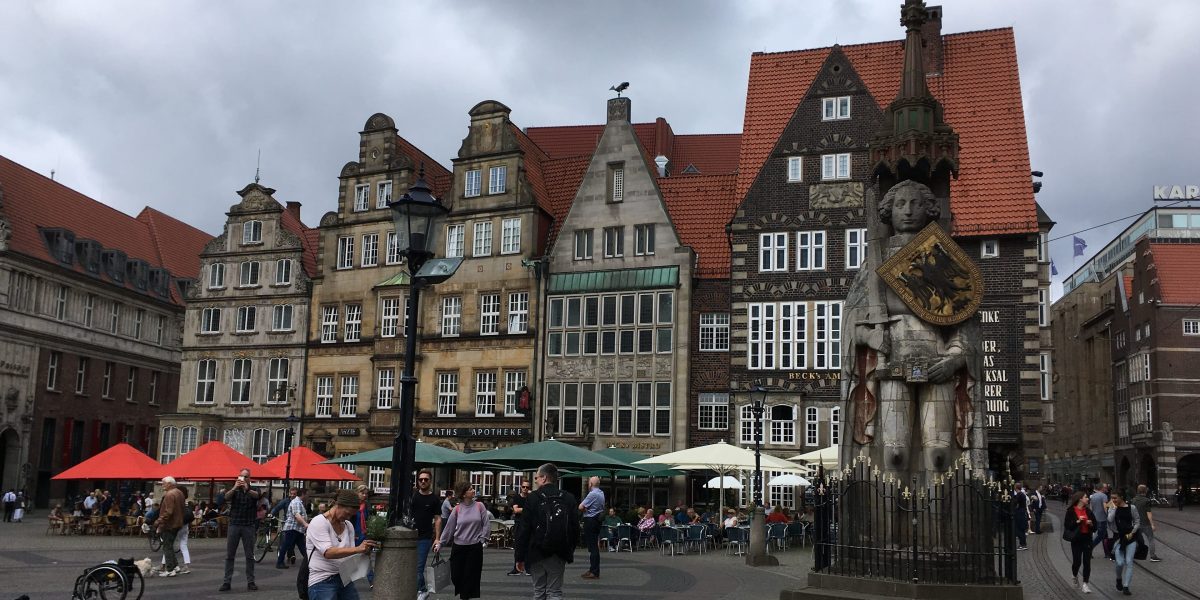
Maddalena’s 3-month secondment at Marum, Bremen
maddalena sammartini (ESR15) | @ marum bremen, germany (june - august 2019)
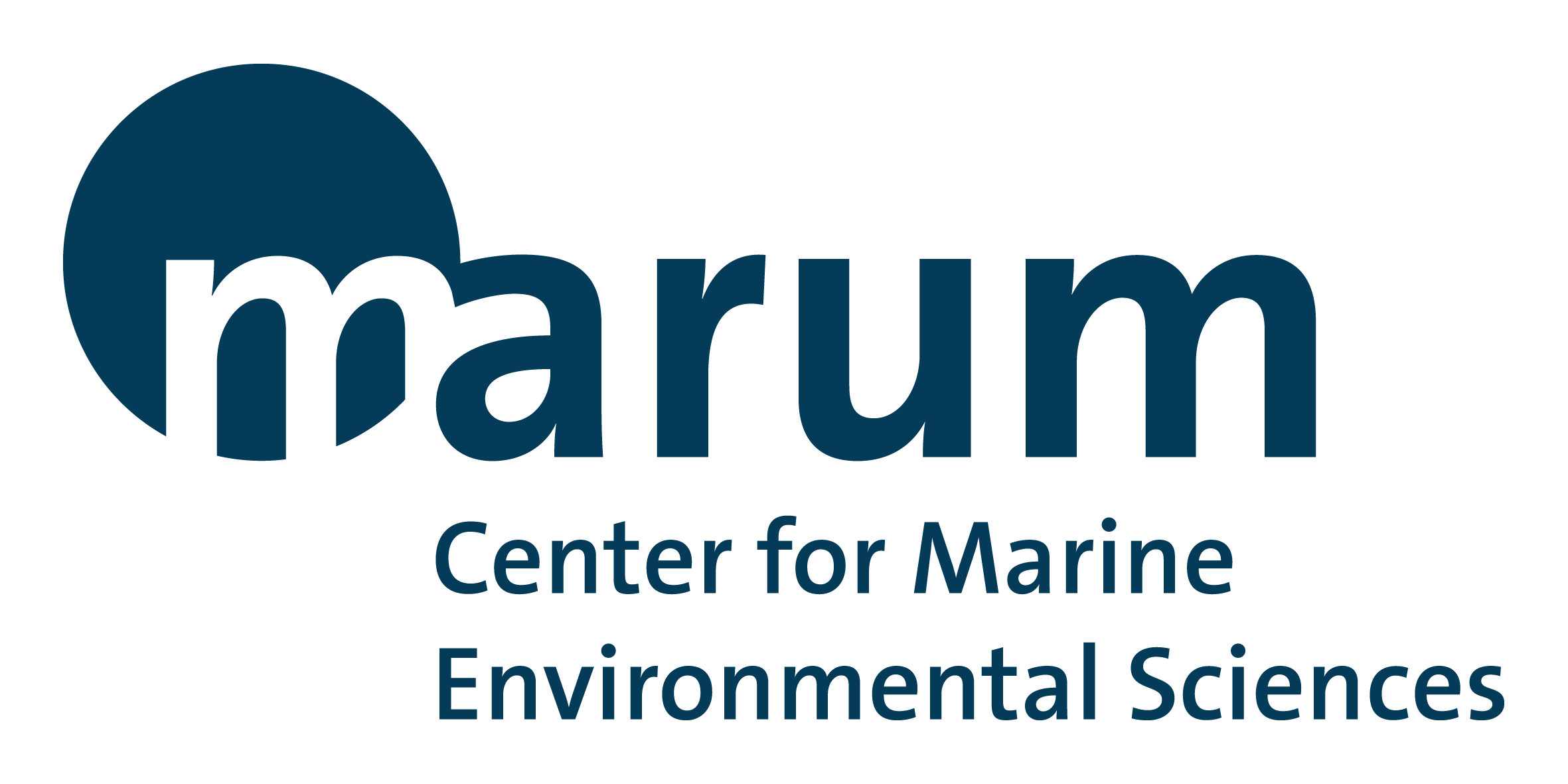 One year after my short visit to MARUM (see previous report), I returned back to Bremen, this time for a three-month secondment. After opening some Lake Lucerne cores in Innsbruck, and performing on them the basic tests, such as water content, fall cone test, vane shear, granulometry analysis, and Atterberg limits, I moved (with my cores) to Bremen for a more advanced geotechnical analysis.
Between June and August I dealt with oedometric tests, pycnometer measures and ring shear tests, with the main aim of characterizing both basin and slope sediments in Zinnen and Kastanienbaum area.
Oedometric test: used for measuring the sediment's consolidation status and compressibility properties. An undisturbed sample of sediment is put inside the consolidation cell, and subjected to increments of effective vertical stress. Each application last for 24h and the vertical displacement of the sample is measured in time. The load is doubled at each increment. After reaching the maximum load needed, the sample is subjected to an unloading phase, during which the swelling properties of the sediment are recorded.
For my tests, I applied the following effective vertical stresses: 2.5, 5, 10, 20, 40, 80, 160, 320 kPa. For the unloading phase: 80, 20, 5 kPa. Each test lasted for 11 days.
Pycnometer test: used for measuring the solid density. After measuring the water content, the dry sample is put in a beaker of known density and then inside the machine, which calculates, in few minutes, the density of the solid.
This device has been very useful for my oedometric test analysis. Knowing the density of the solid, and the initial and final water content of the sample, it is possible to express the vertical displacement at each loading step in terms of void ratio change.
Ring shear test: used for measuring the residual shear strength of soil. A remolded sample of sediment is put inside the ring shear apparatus. The soil, subjected to different vertical stresses, is sheared by rotating the bottom of the ring shear apparatus until it reaches 3 mm of displacement. The shearing velocity is constant during the test, and it has to be carefully selected, based on the kind of sediment, in order to avoid the formation of excess pore pressure.
For my tests I used a shearing velocity of 0.033 µm/s and the following vertical stresses: 2, 5, 10, 17, 32, 64, 125, and 247 kPa. Each test lasted for 19 days.
The biggest challenge during my stay at MARUM, has been recreating, in laboratory, the in situ conditions of my sediments. These geotechnical devices are built to work with the high vertical stresses of marine investigations, with lever arm that multiplies x5 or x10 the weight you put. In my case, I work on superficial lake sediments, which are subjected to an in situ vertical stress of ~2-5 kPa. Therefore, I had to start all my tests with the minimum weight allowed (0.1 kg). With this low weight, the machines are very sensible and just an accidental hit to the working table can ruin the measure and therefore the entire test.
After a first month spent in getting familiar with the all the devices and the technics, and in performing some empty tests for measuring the "machine noise", I was able to perform 11 oedometric tests and 4 ring shear tests.
Thanks to this secondment in Bremen I was not only able to get more interesting data for my Lake Lucerne investigation, but also I developed geotechnical skills, which could be very useful for future career.
Location
One year after my short visit to MARUM (see previous report), I returned back to Bremen, this time for a three-month secondment. After opening some Lake Lucerne cores in Innsbruck, and performing on them the basic tests, such as water content, fall cone test, vane shear, granulometry analysis, and Atterberg limits, I moved (with my cores) to Bremen for a more advanced geotechnical analysis.
Between June and August I dealt with oedometric tests, pycnometer measures and ring shear tests, with the main aim of characterizing both basin and slope sediments in Zinnen and Kastanienbaum area.
Oedometric test: used for measuring the sediment's consolidation status and compressibility properties. An undisturbed sample of sediment is put inside the consolidation cell, and subjected to increments of effective vertical stress. Each application last for 24h and the vertical displacement of the sample is measured in time. The load is doubled at each increment. After reaching the maximum load needed, the sample is subjected to an unloading phase, during which the swelling properties of the sediment are recorded.
For my tests, I applied the following effective vertical stresses: 2.5, 5, 10, 20, 40, 80, 160, 320 kPa. For the unloading phase: 80, 20, 5 kPa. Each test lasted for 11 days.
Pycnometer test: used for measuring the solid density. After measuring the water content, the dry sample is put in a beaker of known density and then inside the machine, which calculates, in few minutes, the density of the solid.
This device has been very useful for my oedometric test analysis. Knowing the density of the solid, and the initial and final water content of the sample, it is possible to express the vertical displacement at each loading step in terms of void ratio change.
Ring shear test: used for measuring the residual shear strength of soil. A remolded sample of sediment is put inside the ring shear apparatus. The soil, subjected to different vertical stresses, is sheared by rotating the bottom of the ring shear apparatus until it reaches 3 mm of displacement. The shearing velocity is constant during the test, and it has to be carefully selected, based on the kind of sediment, in order to avoid the formation of excess pore pressure.
For my tests I used a shearing velocity of 0.033 µm/s and the following vertical stresses: 2, 5, 10, 17, 32, 64, 125, and 247 kPa. Each test lasted for 19 days.
The biggest challenge during my stay at MARUM, has been recreating, in laboratory, the in situ conditions of my sediments. These geotechnical devices are built to work with the high vertical stresses of marine investigations, with lever arm that multiplies x5 or x10 the weight you put. In my case, I work on superficial lake sediments, which are subjected to an in situ vertical stress of ~2-5 kPa. Therefore, I had to start all my tests with the minimum weight allowed (0.1 kg). With this low weight, the machines are very sensible and just an accidental hit to the working table can ruin the measure and therefore the entire test.
After a first month spent in getting familiar with the all the devices and the technics, and in performing some empty tests for measuring the "machine noise", I was able to perform 11 oedometric tests and 4 ring shear tests.
Thanks to this secondment in Bremen I was not only able to get more interesting data for my Lake Lucerne investigation, but also I developed geotechnical skills, which could be very useful for future career.
Location
- MARUM Bremen, Germany
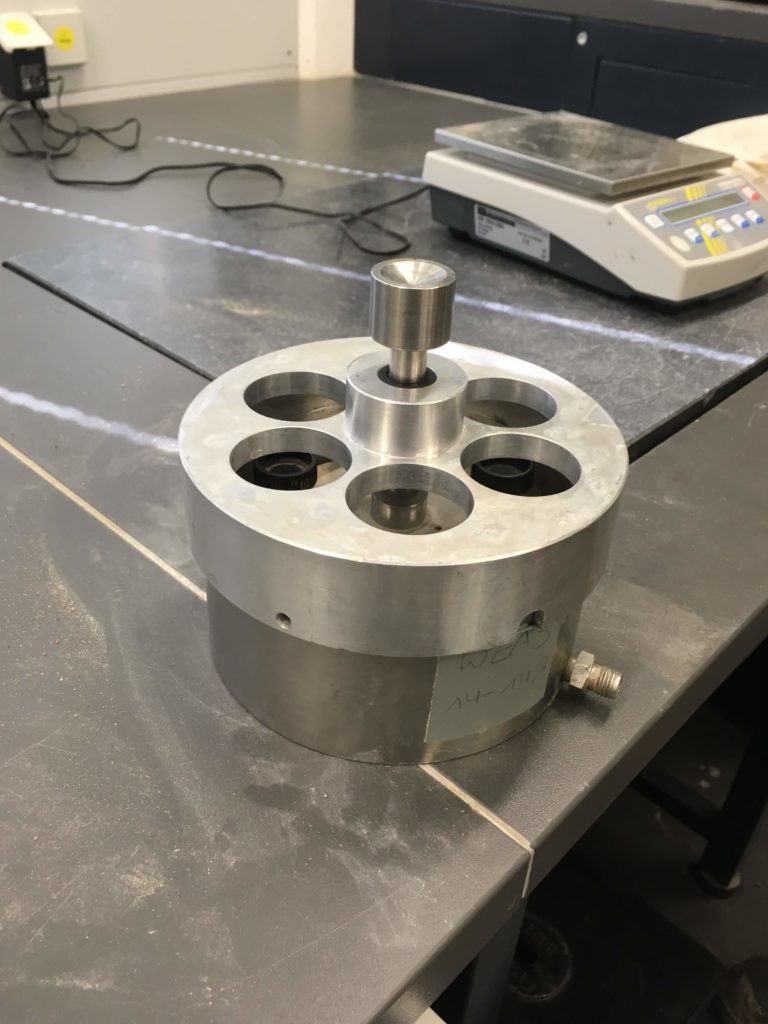
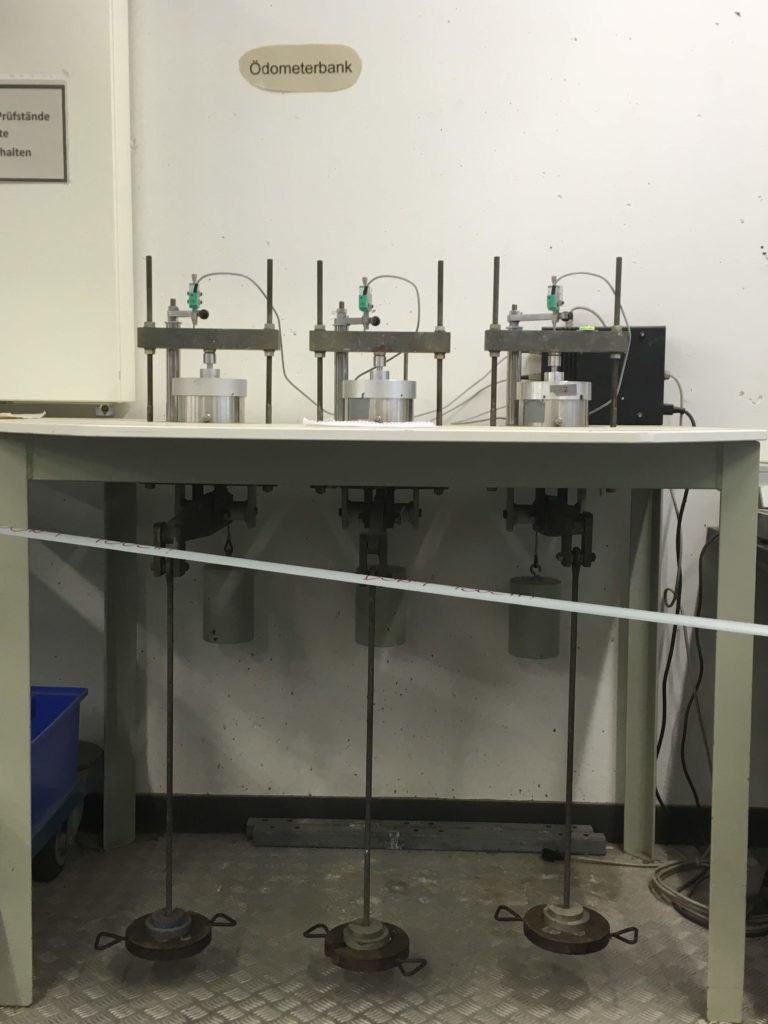
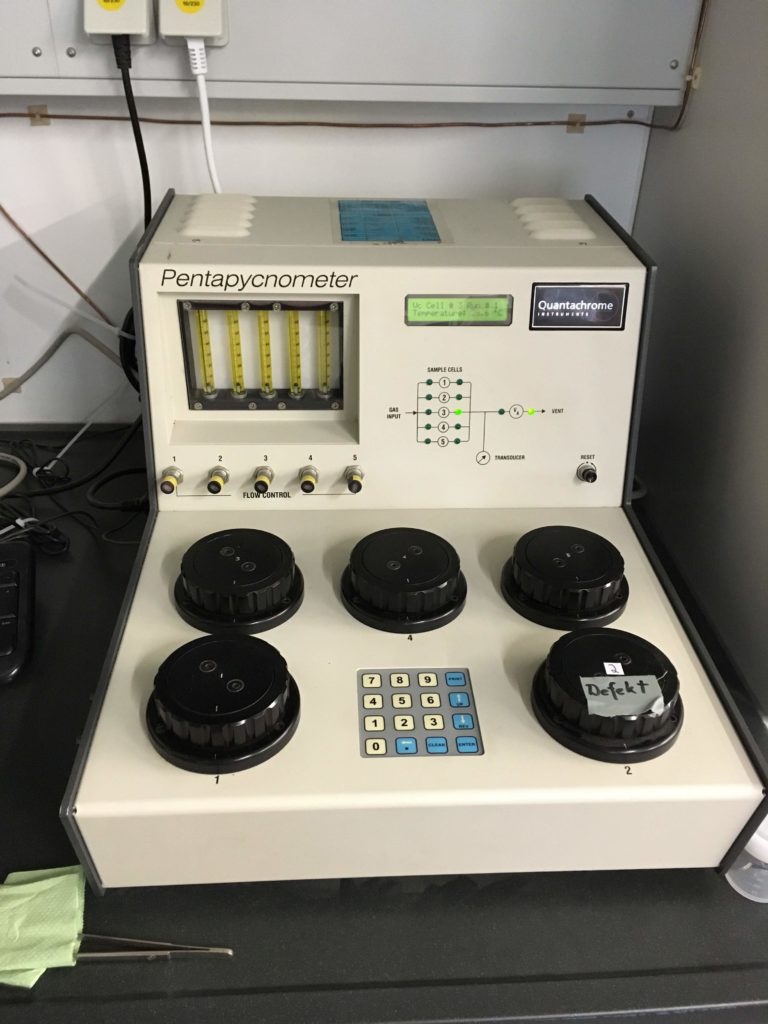
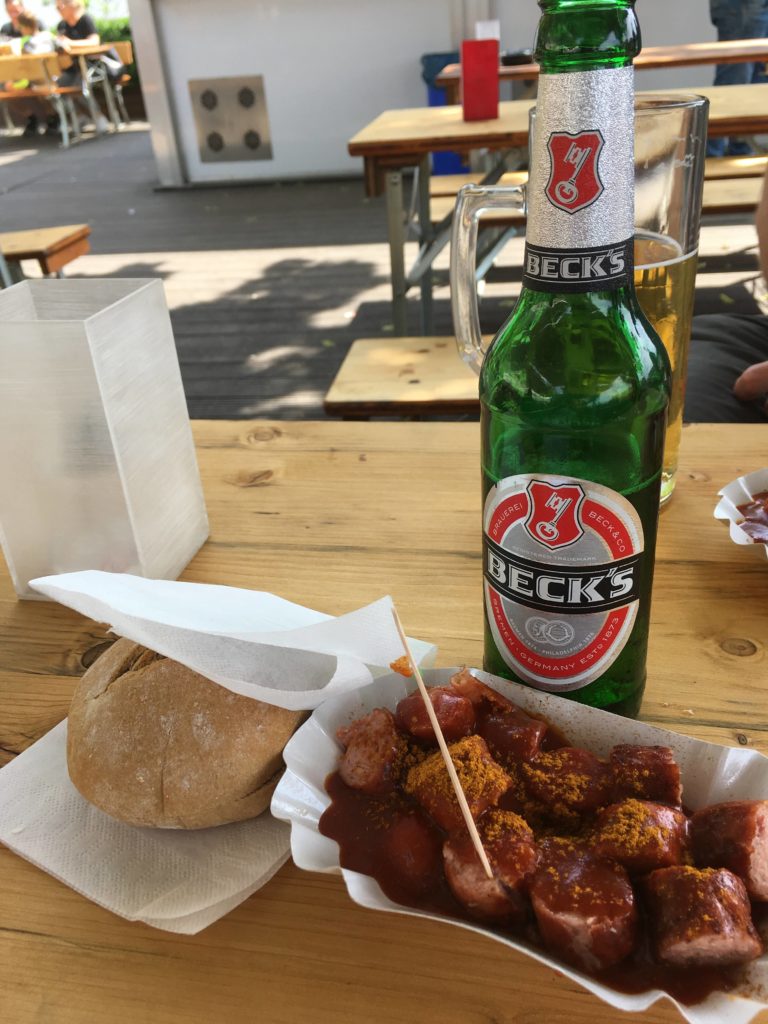
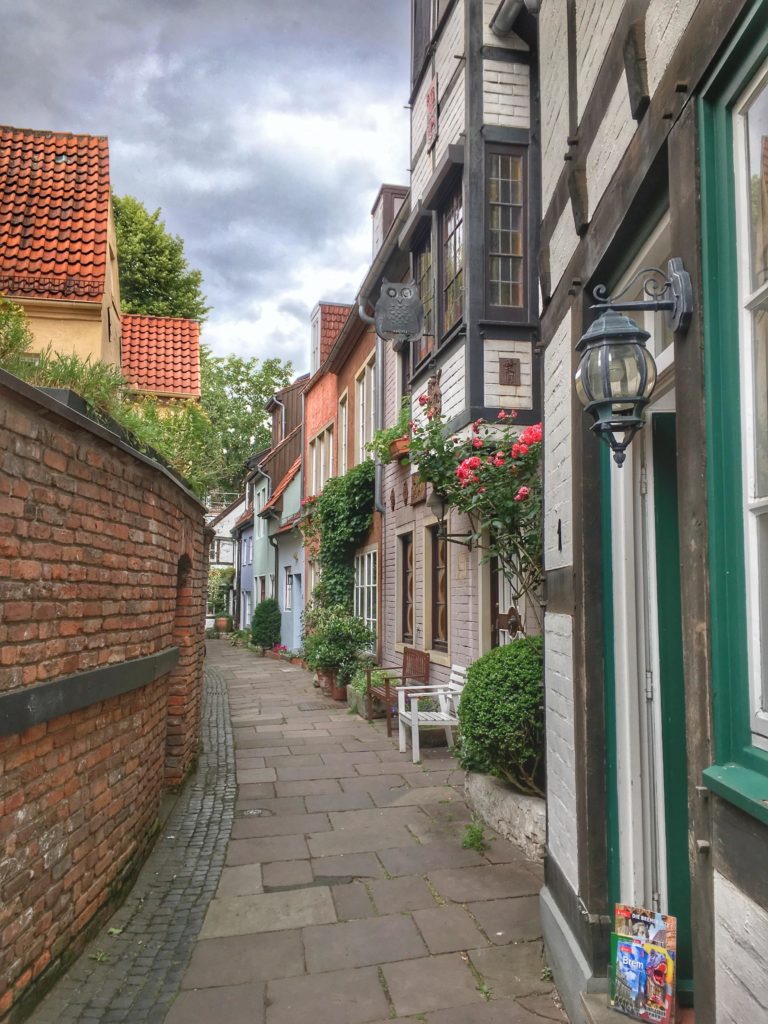
@ Vienna, Austria (07 – 12 April 2019) | 2019-07-23
A GUIDE AROUND EGU 2019
ESR1, ESR 2, ESR 3, ESR 4, ESR 5, ESR 6, ESR 7, ESR 8, ESR 9, ESR 12, ESR 13, ESR 14, ESR15 | @ VIENNA, AUSTRIA (7-12 April 2019)
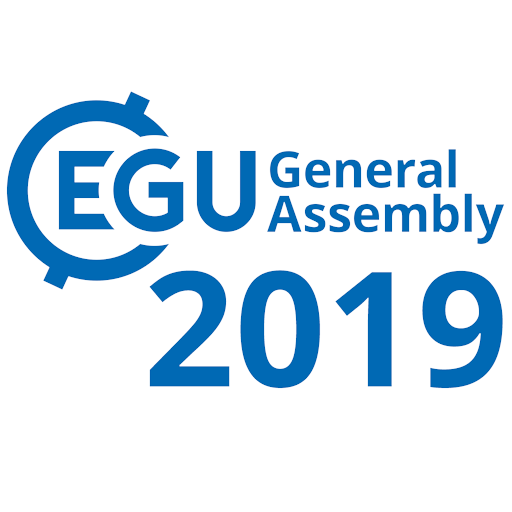
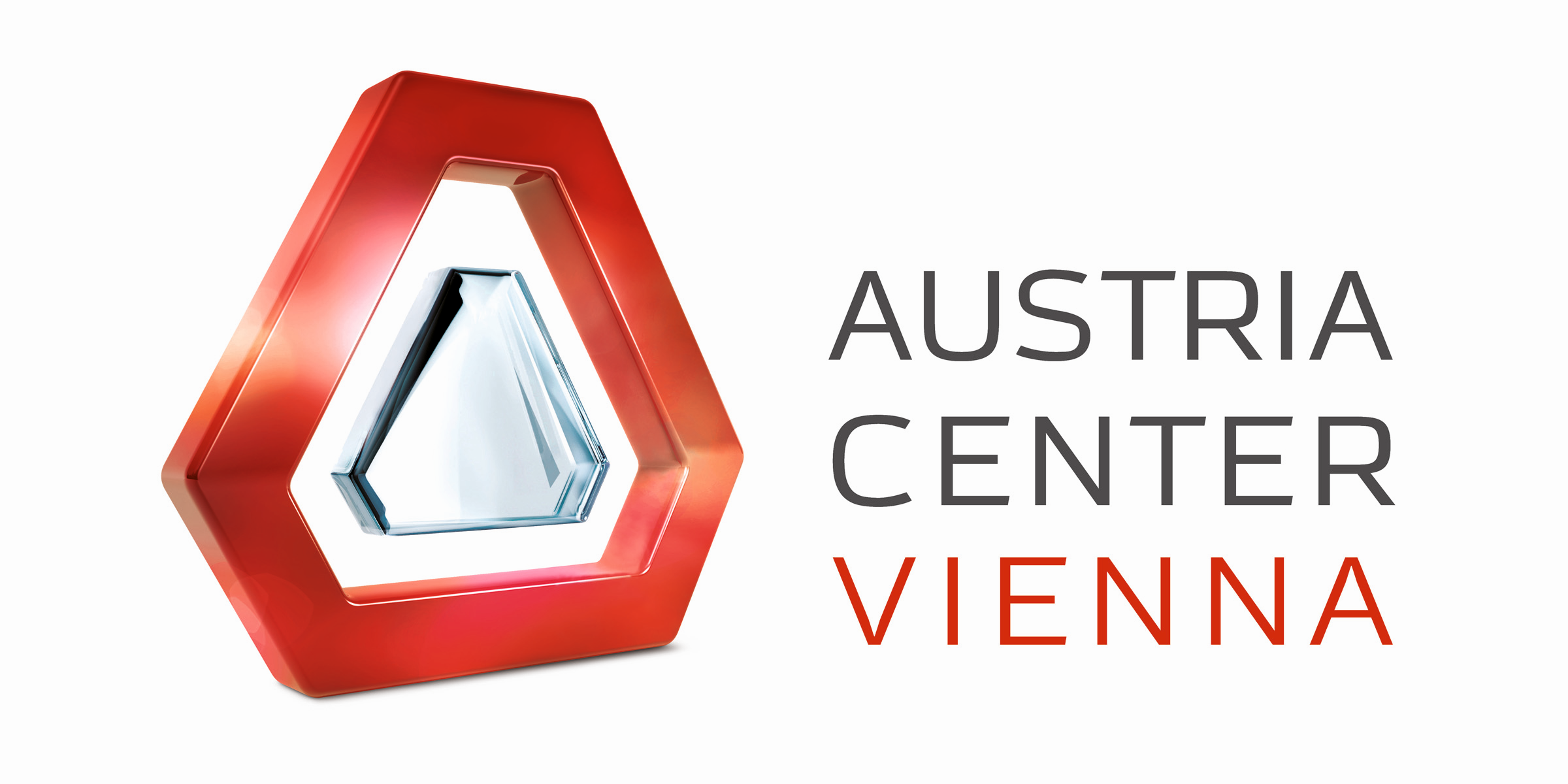
“The EGU General Assembly 2019 was a great success with 5,531 oral, 9,432 poster, and 1,287 PICO presentations that were attended by 16,273 scientists from 113 countries” (Copernicus Meetings, 2019).
SLATE was well represented with 12 PhD candidates, PIs (Achim Kopf, Michael Clare, Carl Harbitz, Finn Lovholt, Michael Strasser) and Aggeliki Georgiopoulou from the advisory board presenting their work.
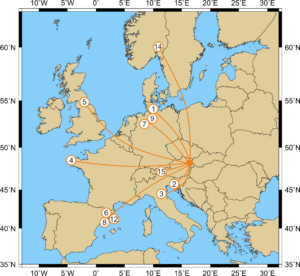
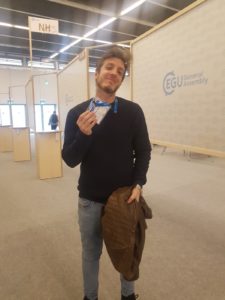 Presenting our work
Presenting our work
Rachel, Jonathan, Tugdual, Shray, Kate, William and Matthias drew crowds of people into the lecture rooms with their amazing presentations. They spoke on a variety of topics; covering different aspects of turbidites and their evolution, contourites and submarine landslides.
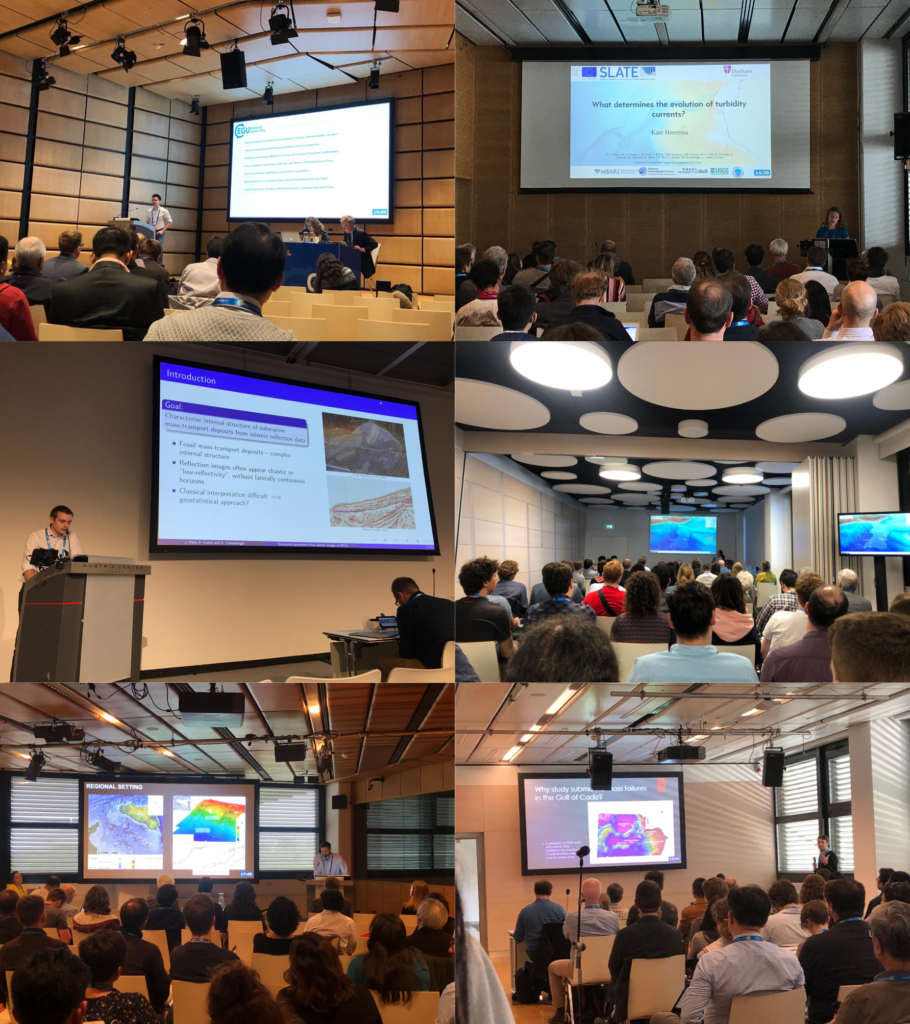 “I was very happy to be able to present my work at this conference, as it gives an occasion to present our work in front of a wide audience with very diverse backgrounds. I came out with very good feedback and advice for my work.” (Tugdual Gauchery, ESR 3)
“I was very happy to be able to present my work at this conference, as it gives an occasion to present our work in front of a wide audience with very diverse backgrounds. I came out with very good feedback and advice for my work.” (Tugdual Gauchery, ESR 3)
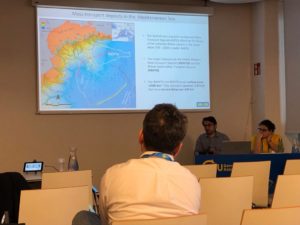
„It was my first time at the EGU and it was overwhelmingly large. I had the opportunity to talk to several researchers after my talk – it is always good to get feedback on both the positive and negative parts of ones research.” (Shray Badhani, ESR 4)
Davide, Ting-Wei, Stefano, Ricarda and Maddalena presented their work in the poster sessions and attracted a lot of people.
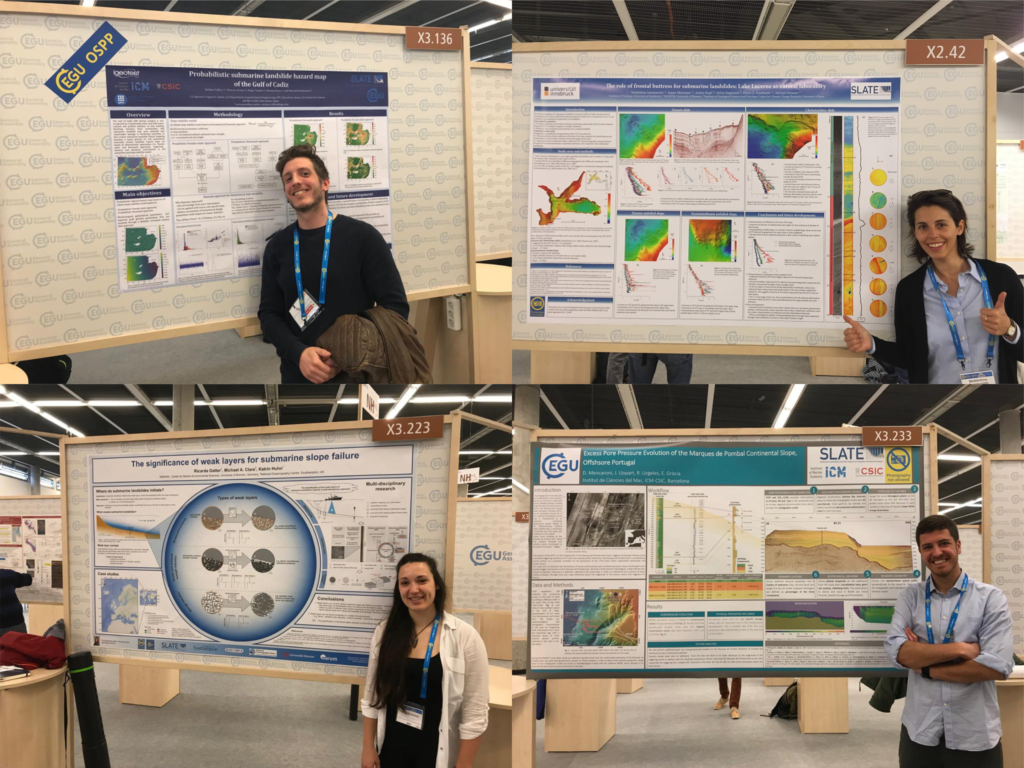
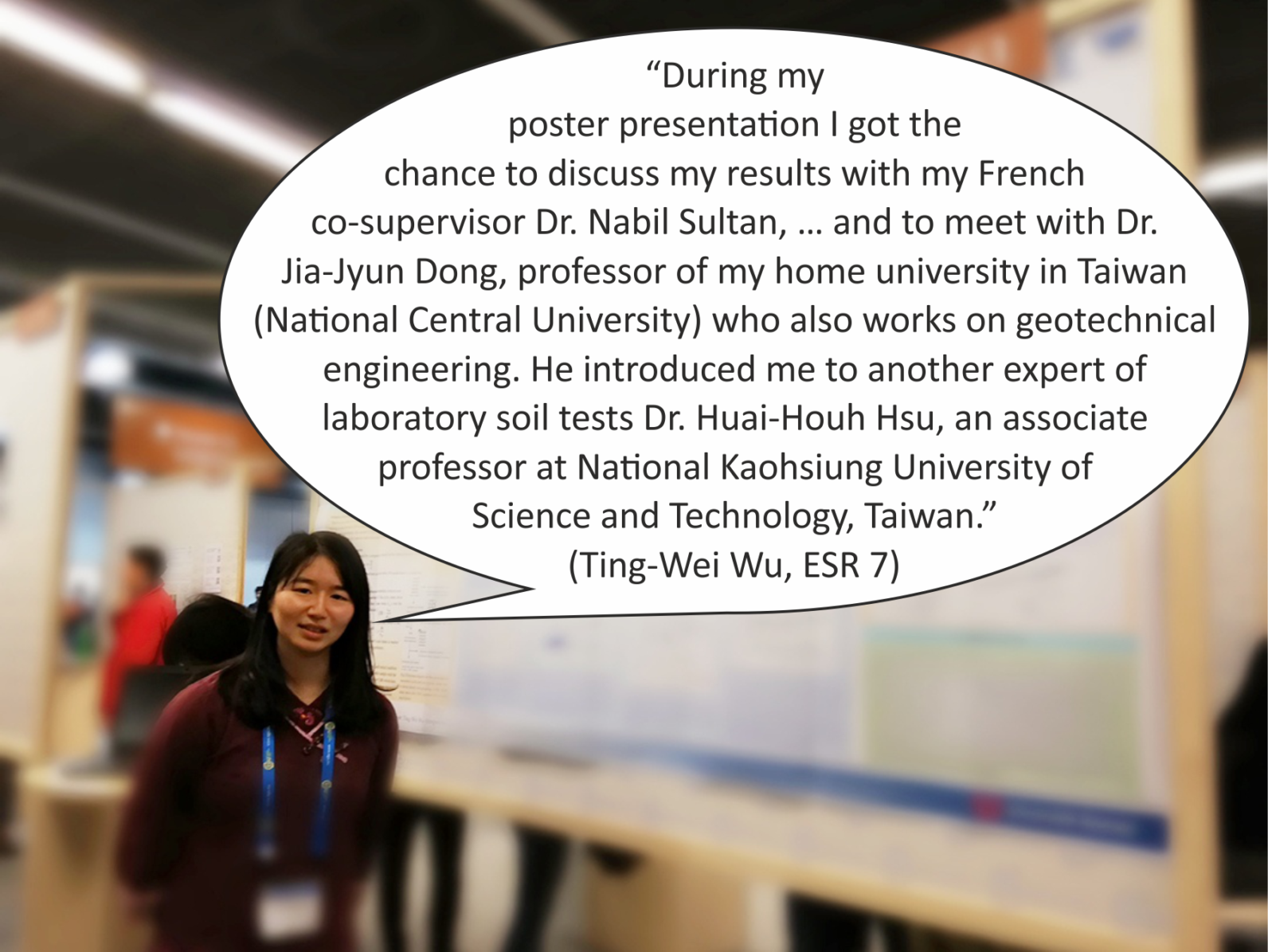
“Presenting a poster at a conference like EGU is a great learning opportunity for any early career scientist. On one hand, I had the chance to discuss my research with people working in the same research field and to meet scientists I had only known from reading their papers. What surprised me the most, however, were the questions I got from scientists specialized in completely different fields, looking at my project from a prospective I do not usually consider. People who were just randomly walking around posters asked me the most challenging questions, highlighting issues that I never considered before, but that helped me to have a more complete understanding of what I am studying.” (Davide Mencaroni, ESR 6)
And learning new thingsApart from presenting our own work, we took the opportunity to learn more about work from outside our own fields. Alongside the traditional poster and oral presentations, EGU also hosts so called “PICO” presentations (Presenting Interative COntent) and short courses on more general topics in science.
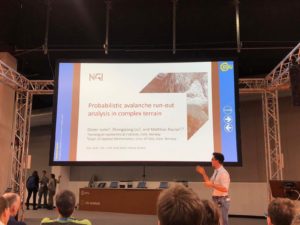
“One thing that I really enjoyed about EGU were the PICO sessions. PICOs start with quick-fire two minute presentations from each researcher to briefly introduce their topic and state their main conclusions. After, everyone moves across to the interactive area, where each presenter has their own workstation and large screen. This really facilitates discussion and allows for more flexibility that a standard poster or talk. For me, the PICO sessions are a great way to be introduced to an unfamiliar area, because the results are presented up front and you get to see a rapid cross section of the state-of-the-art in a particular field.” (Jonathan Ford, ESR 2)
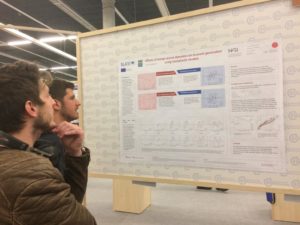
“It was a great opportunity to get some insights from overlapping, but vastly different, fields. For instance to see what the current state of research in Powder Snow Avalanches is, or to get some background knowledge on numerical modelling in turbidity currents as preparation for my secondment at NGI.” (Kate Heerema, ESR 5)
“One of the most exciting sessions I attended was on the recent tsunami events in Sulawesi and West Java (Krakatao), Indonesia (Blog). Although most of the group seemed to agree that these tsunami events were, in fact, submarine landslide-related, there was some surprisingly lively pushback from at least one seasoned researcher. I think the overall tsunami community seems to be experiencing a small paradigm shift in how they think about tsunami hazards. I also enjoyed stopping by different poster sessions related to tsunami hazards and had some great networking conversations with a group of researchers from Singapore about their work and how it relates to some tsunami survey work that I previously did as a master’s student” (William Meservy, ESR 12)
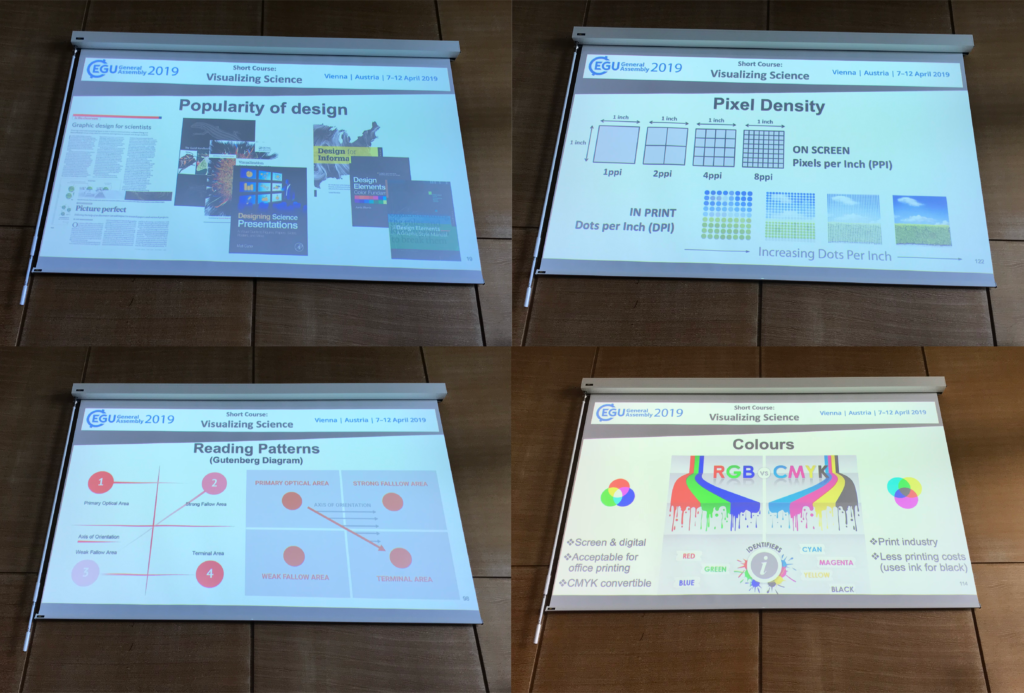
“I went to three courses, of which I especially liked the “Visualizing Science” course. I think we often forget how important it is to present our research to other scientists, as well as to the general public.” (Ricarda Gatter, ESR 9)
“The quantity and variety of soft skill courses available at the EGU undoubtedly adds value to the conference. I attended a course about communicating science with the general public and enjoyed hearing different perspectives about what effective communication looks like, and how that can take different forms. One point that stood out was the value of knowing when it is worthwhile to get the assistance of people who are trained in communication, such as journalists, to communicate significant results.” (Rachel Barrett, ESR 1)
Need help to find your way around? - use the EGU AppFinding your way around a big conference such as EGU can be difficult. Luckily, there was an app available in which you could find all the contributions and put together your personal programme. In addition, we kept everybody up to date with our own contributions via Twitter.
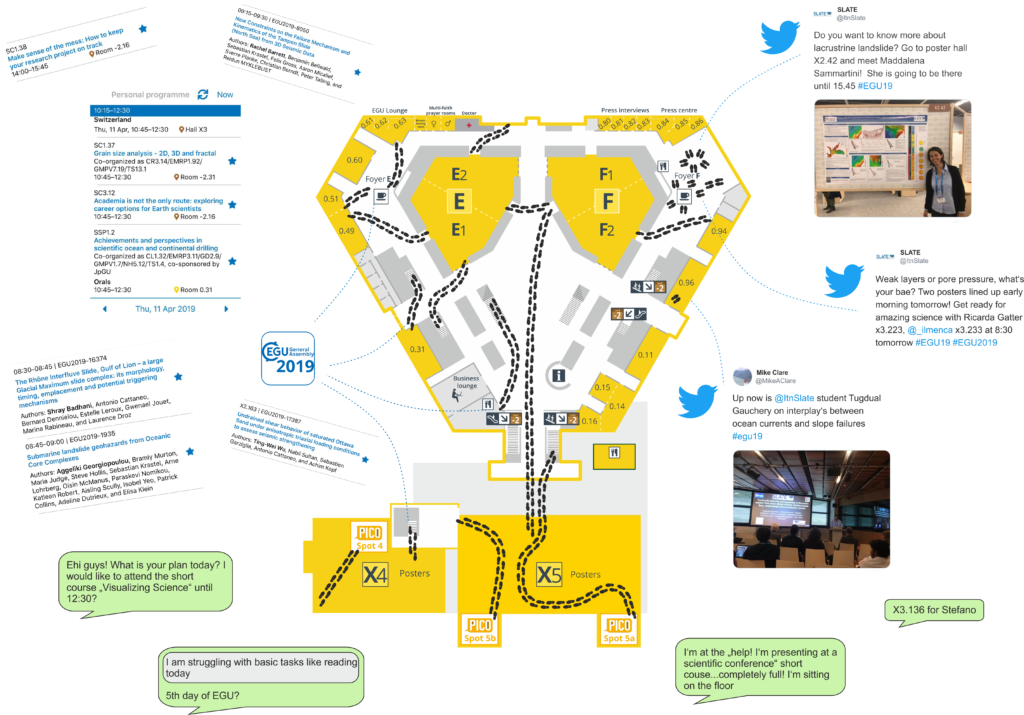
“I knew that EGU is the most important Geoscience conference in Europe, but I didn’t expect something like this. It was difficult not to be impressed by the amount of different topics and talks, but above all, I was struck by the hundreds of posters that everyday are hanging in these huge rooms.” (Maddalena Sammartini, ESR 15)
To sum it up“I was honestly impressed by the EGU conference. It was the perfect environment to discuss a wide range of research topics and learn about other researchers’ PhD experiences.” (Stefano Collico, ESR 8)
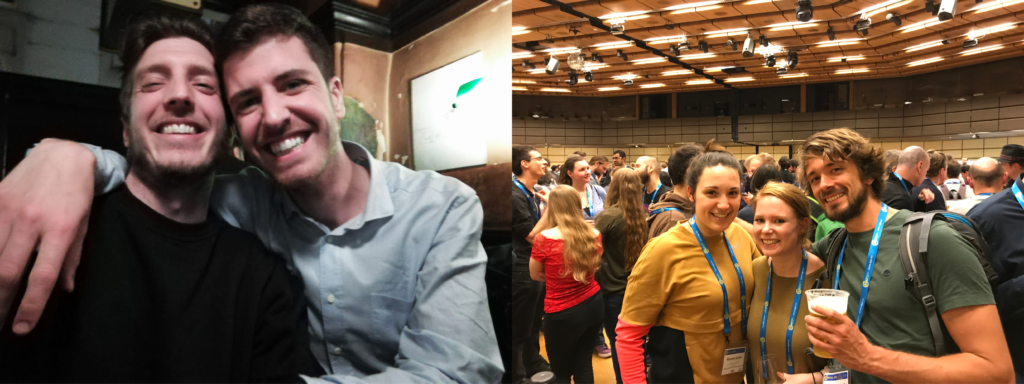
“It is such a great international experience. I even met my friends from my home university in India. I am already looking forward to EGU2020.” (Shray Badhani, ESR 4)
“One of the highlights of the experience for me was that I was lucky enough to be able to bring my wife and kids along to explore Vienna. In the evenings, we were able to walk in the city together and eat a lot of goulash and Viennese chocolate cake” (William Meservy, ESR 12)
“EGU is an essential event for every geoscientist working Europe. It is the perfect opportunity to meet new people with common interests, present the latest progress of your work, get valuable feedback and to foster old friendships” (Matthias Rauter, ESR 14)
EGU - Let's meet again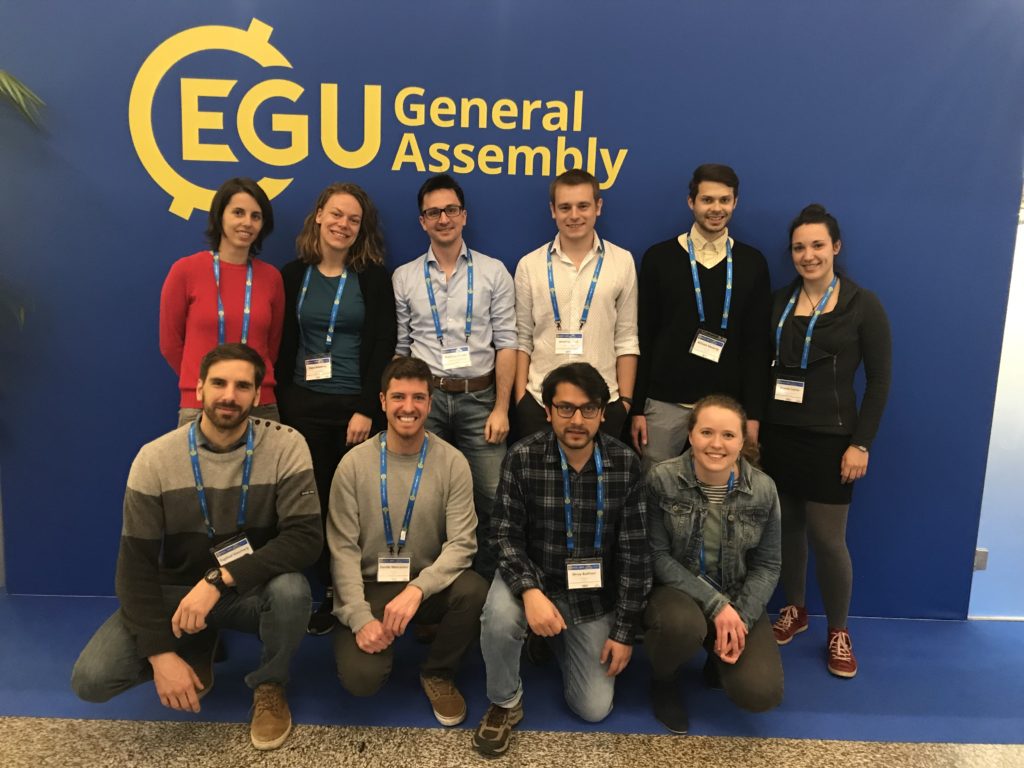 Location
Location
- Vienna, Austria
 Conference Schedule
SLATE participants
ESRs:
Conference Schedule
SLATE participants
ESRs:
- R. Barrett, ESR1 [Talk]
- J. Ford, ESR2 [Talk]
- T. Gauchery, ESR3 [Talk]
- S. Badhani, ESR4 [Talk]
- K. Heerema, ESR5 [Talk]
- D. Mencaroni, ESR6 [Poster]
- T-W Wu, ESR7 [Poster]
- S. Collico, ESR8 [Poster]
- R. Gatter, ESR9 [Poster]
- W. Meservy [Talk]
- T. Zengaffinen, ESR13 [Poster]
- M. Rauter, ESR14 [Talk]
- M. Sammartini, ESR15 [Poster]
- A. Kopf, PI of ESR7 [Poster]
- M. Clare, PI of ESR10 [PICO]
- C. Harbitz, PI of ESR13
- F. Løvholt, PI of ESR14 [Poster]
- F. Løvholt, PI of ESR14 [Convener]
- M. Strasser, PI of ESR15
- A. Georgiopoulou, Advisory Board [Talk]
@ MARUM / University of Bremen | 2018-07-10
Report on the first part of my secondment at MARUM, Bremen
Maddalena Sammartini, ESR 15 | 24-29/06/2018

In the investigation of a landslide, the geotechnical characterization of sediments upslope the slide scar is a common and fundamental study, providing information about pre-conditioning and trigger mechanisms, and failure evolution. Furthermore, core and geotechnical data of an unfailed slope are widely used for the stability assessment, and geohazard evaluation of the area.
The same cannot be said for basin sediments, which are generally not taken into consideration for the characterization of the instability. One question we want to address is whether the geotechnical properties of sediments at the base of the slope can play an important role in the failure initiation and in the frontal style of the deposit (frontally emergent or frontally confined). To do so, we chose as natural laboratory Lake Lucerne, in which a huge dataset of geophysical and core data is already available from previous surveys. Furthermore, Lake Lucerne is one of the focus sites of the ongoing SNF Sinergia Project, which aim is to understand better “fresh water” tsunami.
In March I had the opportunity to join the SNF Sinergia Project CPT campaign and I acquired several CPT measurements in four different sites (see previous report). For each site we acquired transects of CPTs in order to study the variability in geotechnical properties along and outside a slide deposit, and to understand the role of frontal buttress.
At the end of June (24th-29th) I visited MARUM in Bremen for a week-long meeting on CPT data processing and interpretation. Under the supervision of Dr. Sylvia Stegmann, I started to deal with the different parameters that are involved in CPT measurements and with the different steps in the CPT processing routine using the FFCPTuPro Software. The main steps are conversion of the files, from raw data to ascii file, calibration of the instrument sensors, depth calculation and penetration rate correction. The depth calculation is without doubts the trickiest step. In here, you have to pick the moment in which the instrument started the penetration and the moment in which it stopped. Based on this time interval, the software is calculating the penetration depth. In case of soft sediments, common in the lake basins, the transition from water column to sediments is not distinct and therefore it is necessary to do some assumptions based on field observations (i.e. if and until where the instrument was dirty after the measure). The result of the processing are different graphs showing the local variability with depth of geotechnical parameters, such as cone resistance, sleeve friction, undrained shear strength and pore pressure. All of them are used for the characterization of the sediments. The week at MARUM was intense and at the end I finished the processing of all the CPTs we acquired in March, and started with the interpretation of the data.
Further steps ahead are some laboratory tests in cores and the organization of the new campaign in Lake Lucerne, which will take place right before the SLATE annual meeting in September. We aim to acquire new seismic lines, new CPTs, especially in the Zinnen landslide area, and new cores, useful for our geotechnical study.
My stay in Bremen, which is part of one of my secondments, has been fundamental for my introduction to the “CPT world”. Furthermore, it gave me many useful ideas for the upcoming campaign.
Where? When?- 24-29/06/2018
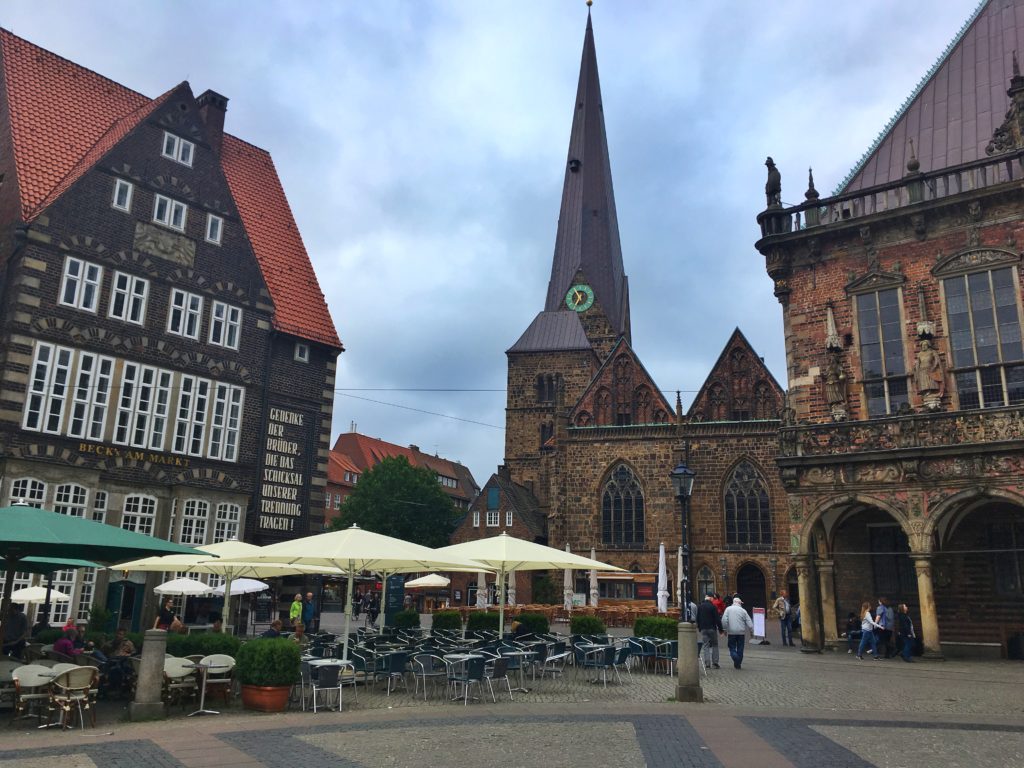
View on the historic Bremen market square
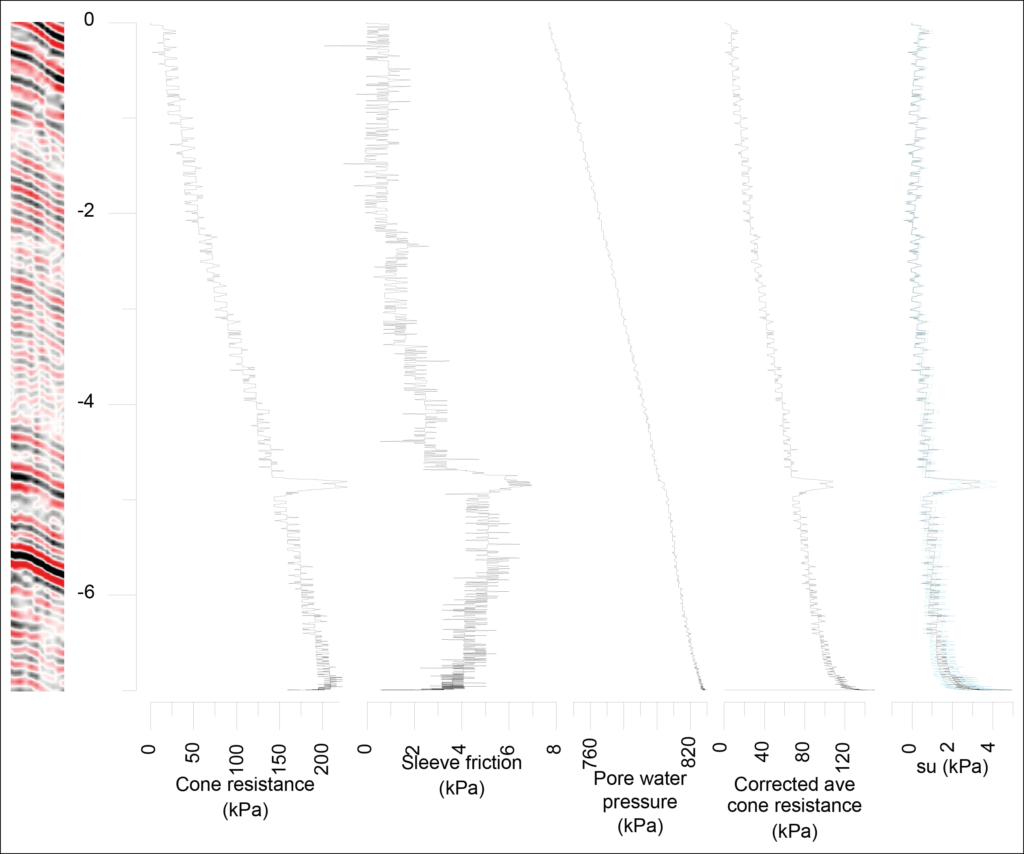
Example of CPT data
@ Victoria, Canada (7-9 May 2018) | 2018-05-28

Review of the 8th International Symposium on Submarine Mass Movements and Their Consequences (ISSMMTC)
Rachel Barrett (ESR1), Tugdual Gauchery (ESR3), Maddalena Sammartini (ESR15) | @ Victoria, Canada (7-9 May 2018)

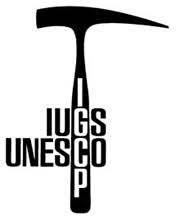
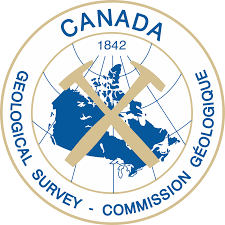

The 8th International Symposium on Submarine Mass Movements and Their Consequences (ISSMMTC) was hosted in Victoria, Canada this year. This bi-/triannual conference is a great opportunity for scientists who are studying mass wasting events to come together and discuss the latest in this growing field of research, and the small size of the conference (about 100 delegates) makes it easy for students to get involved and get good feedback on their work.
SLATE was well represented with PhD candidates (Rachel Barrett, Tugdual Gauchery, Kate Heerema, Maarten Heijnen and Maddalena Sammartini), Principal Investigators (Sebastian Krastel, Michael Clare and Angelo Camerlenghi), SLATE Project Manager (Jannis Kuhlmann), and SLATE-GEOMAR Project Partner (Morelia Urlaub) all presenting their work.
Here, three of our PhD students discuss their experience at the conference:
Rachel Barrett (ESR1)I presented a poster on my recent work entitled “Towards Semi-Automatic Delineation of Submarine Landslides”, borne out of work that began during my research stay with Aaron Micallef in Malta in January. In the poster, I presented preliminary results for the semi-automatic extraction of the headscarps of the Tuaheni and Valdes landslides (active and passive margin, respectively), using values of curvature and slope. A key goal in semi-automatically delineating submarine landslides is to reduce the visual bias (and consequently, range in the value of subsequently calculated parameters such as runout length and volume) that is innately present when their extent is manually defined.
Presentations and conversations I had during the conference helped to highlight research priorities for the next couple of months, and I left the conference with a clearer understanding of what has already been tested in this field (both successfully and unsuccessfully), as well as with possibilities of future collaborations. Overall, I found the 8th ISSMMTC to be a fantastic learning opportunity, and look forward to the next one in 2020.
Tugdual Gauchery (ESR 3)In May 2018 the 8th ISSMMTC was held in Victoria (BC). After presenting a poster at the EGU in April, the focus on mass wasting and the decrease in the number of participants made this symposium even more interesting and it was also easier to get in contact with other scientists.
The poster I presented “Triggering factors and stratigraphic reconstruction of multi-stage failures in the southeastern slope of the Gela Basin in the Strait of Sicily (Central Mediterranean Sea)”, was the next step of my research project for my PhD conducted at ISMAR-CNR in Bologna (Italy). This conference was a great way to show my work to experts and get to know more people from the offshore mass wasting research community.
It was also a chance to visit this beautiful country and discover new places by participating in field trips organised by the conference. They showed us the best places to see in terms of nature (Saanich inlet; Cathedral Grove, Cypress Mountain, …) and geology (tsunami records in Port Alberni, spits, coastal erosion, Squamish geohazards and emergency planning, mass movements, flood mitigation and marine infrastructure). I also got the chance to hear R. Craig Shipp, who is the principal technical expert in geohazards assessment at Shell International Exploration and Development Company, for the course “Introduction to Geohazards Assessment: An Energy Industry Perspective” organized by the conference and which lasted 2 days. The different types of geohazards, the drilling operations, the seismic data, the geohazards interpretation, the standards, and monitoring were reviewed, analyzed with examples and with the leader’s experience.
Maddalena Sammartini (ESR 15)In May 2018 I participated in the 8th ISSMMTC, the first conference since the start of my PhD in Innsbruck. Since I was presenting both a poster and a paper, it was a challenging but very positive experience.
The paper I presented, “Open-slope, translational submarine landslide in a tectonically active continental margin: the Licosa submarine landslide (South-eastern Tyrrhenian Sea)” (Sammartini et al., This conference), is the result of the internship I completed at the OGS in Trieste, Italy, under the supervision of Dr. Angelo Camerlenghi. In my 15-minute talk I presented the interpretation of bathymetric, seismic and core data of Licosa landslide, which occurred on a very gentle and apparently stable slope approximately 11 ka BP. Our research was aimed at identifying evidence in the regional geological structure for potential slope-failure preconditioning factors and triggering factors.
The poster I presented showed some preliminary results of my PhD, which focuses on building a catalogue of lacustrine landslides worldwide. I applied, in a lacustrine environment, the consistent quantitative-description method outlined by Clare et al. (This conference), showing two outstanding examples from Lake Zurich.
The symposium has been a great occasion to “officially” enter into marine geology research, as well as to meet international colleagues. Furthermore, the interaction with other scientists provided me with a list of other lakes to add to my catalogue of lakes where landslide-related research has been carried out.
Location- Victoria, BC, Canada
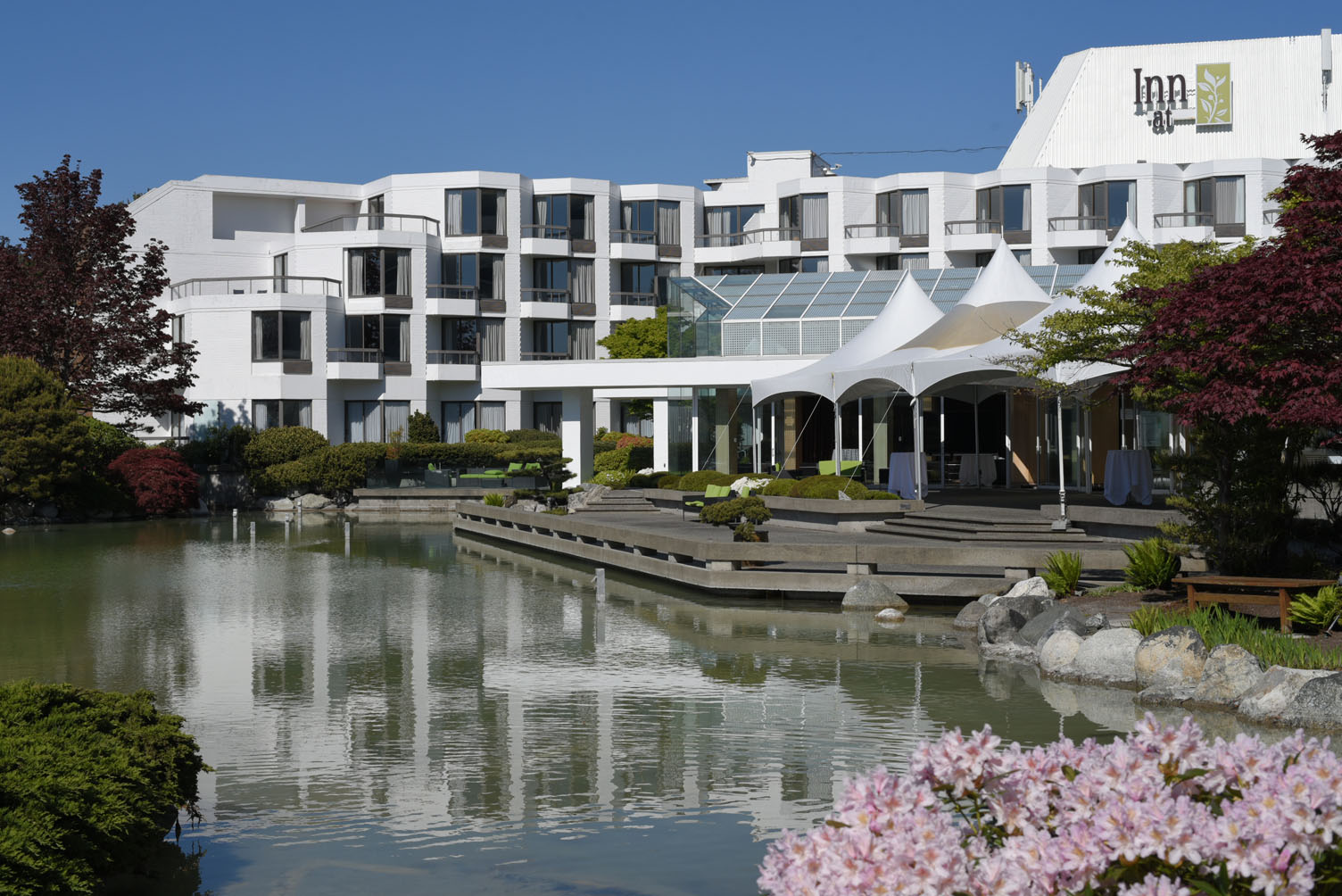 Conference Schedule
SLATE participants
Conference Schedule
SLATE participants
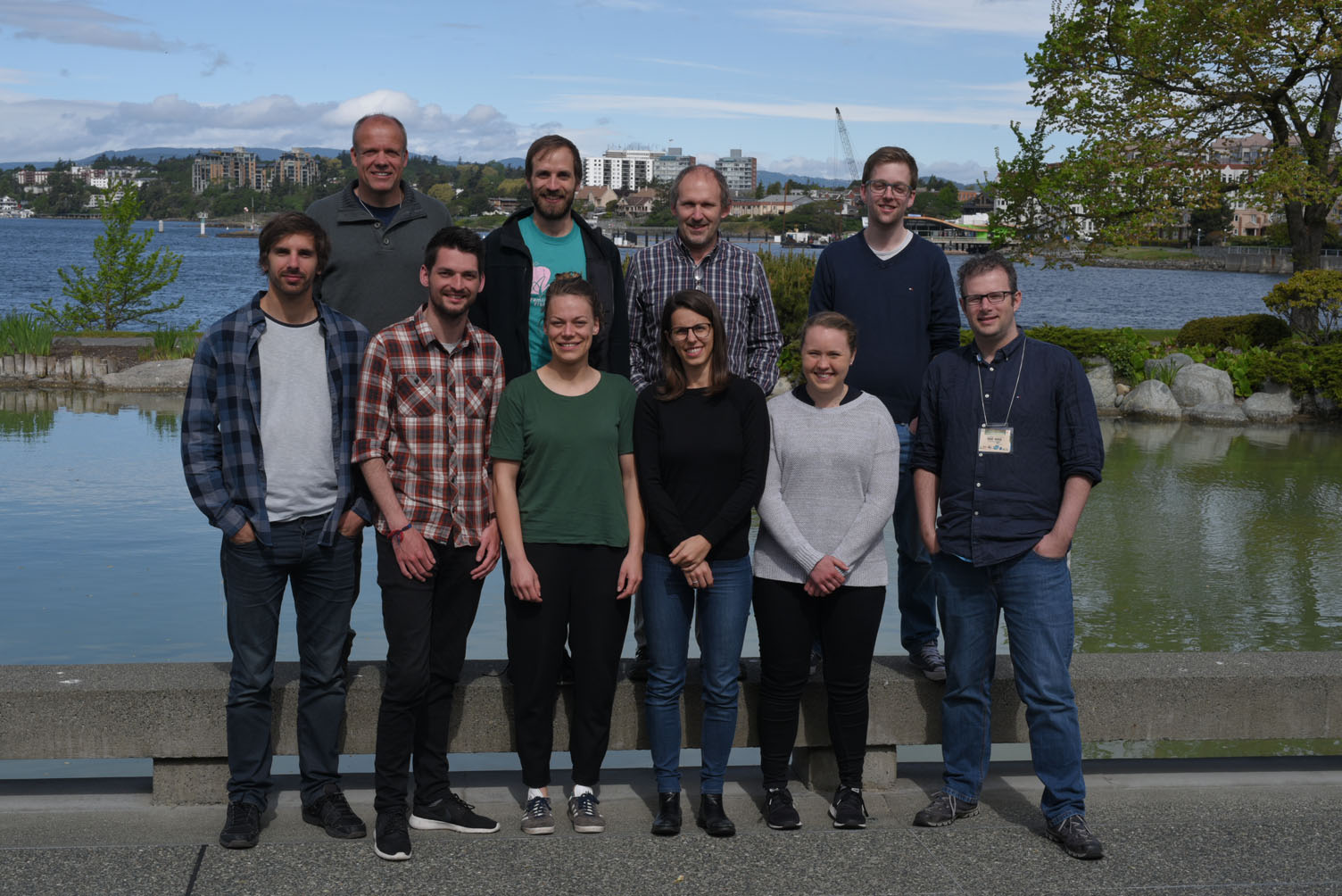 ESRs:
ESRs:
- R. Barrett, ESR1 [Poster]
- T. Gauchery, ESR3 [Poster]
- K. Heerema, ESR5 [Poster]
- M. Heijnen, ESR10 [Talk]
- M. Sammartini, ESR15 [Poster]
- M. Sammartini, ESR15 [Talk]
- S. Krastel, PI of ESR1 [Talk]
- M. Clare, PI of ESR10 [Talk]
- J. Kuhlmann, Project Manager [Talk]
- M. Urlaub, Project Partner [Talk]
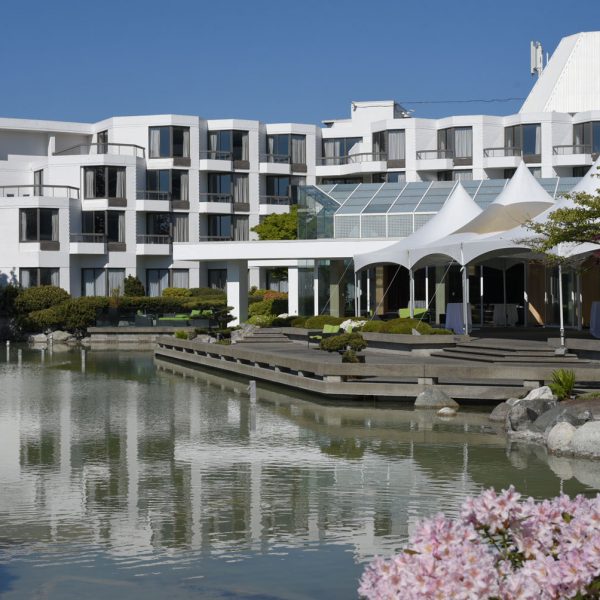
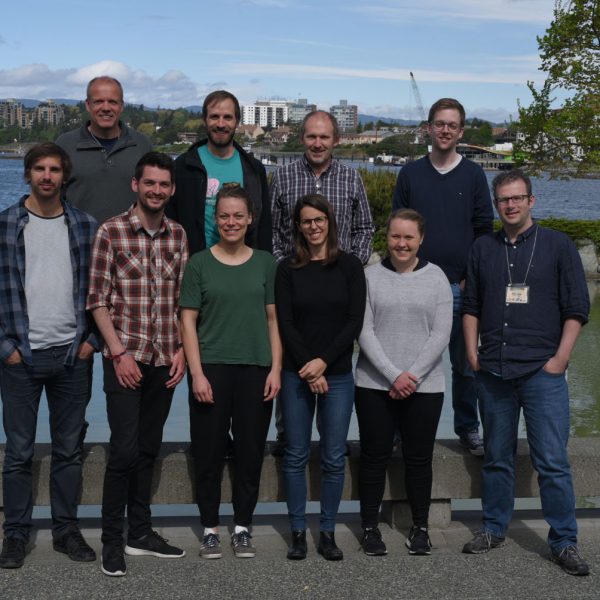
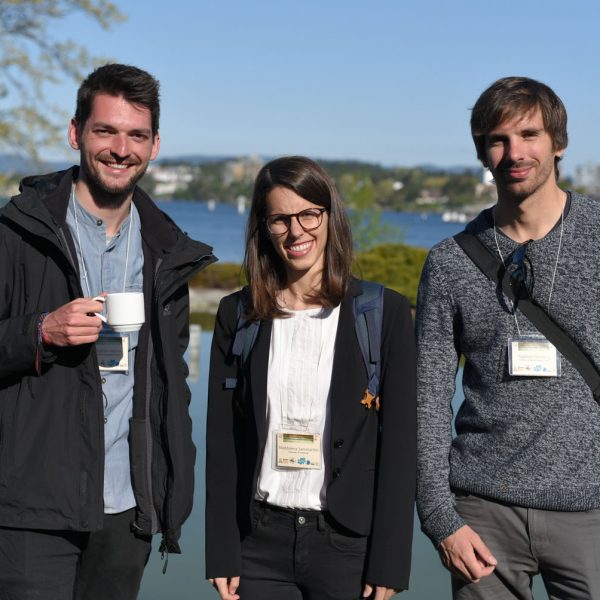
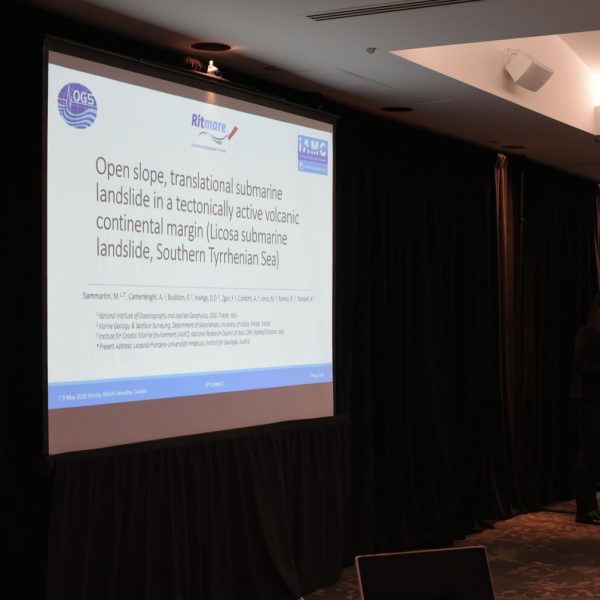
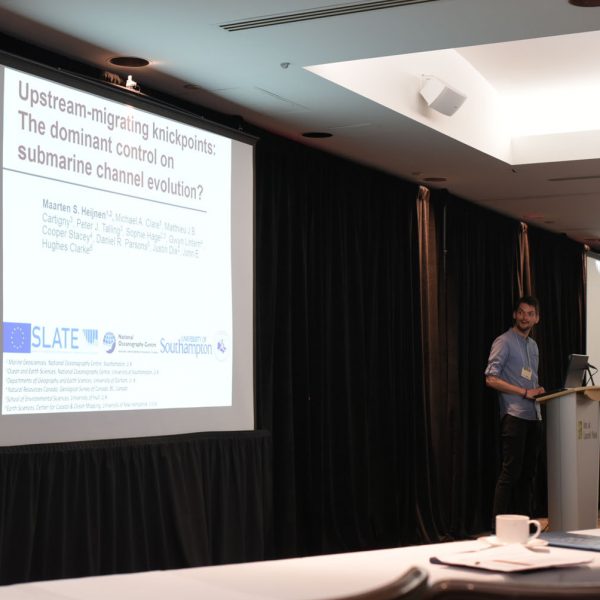
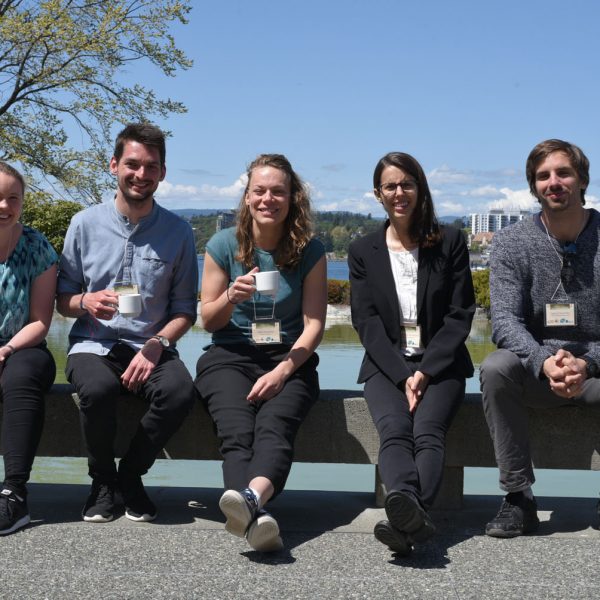
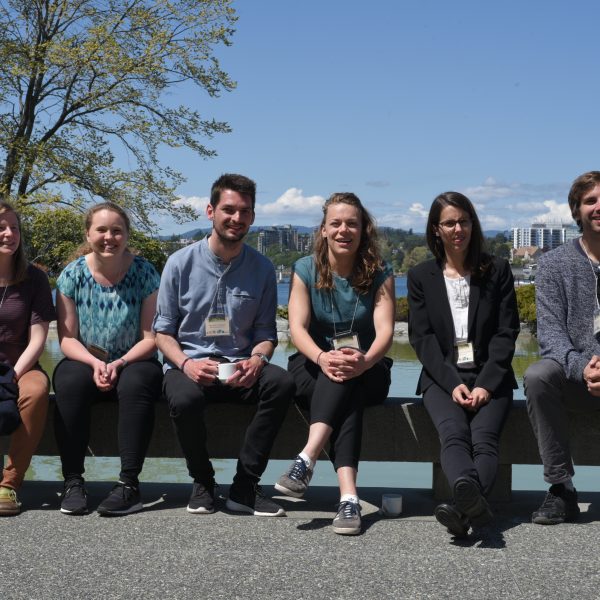
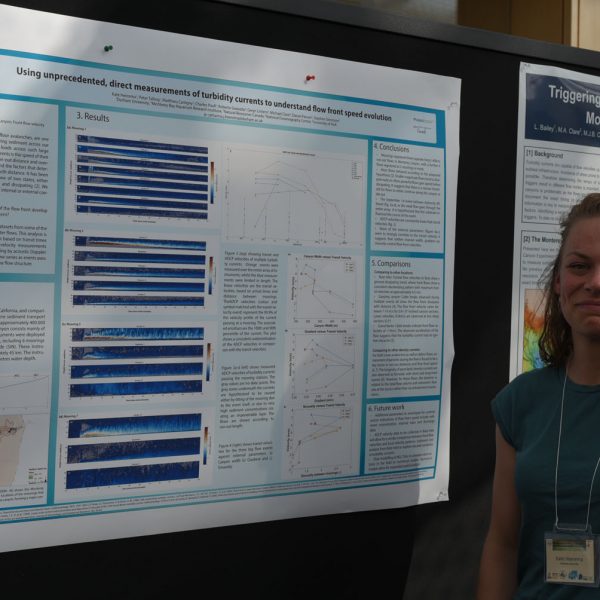
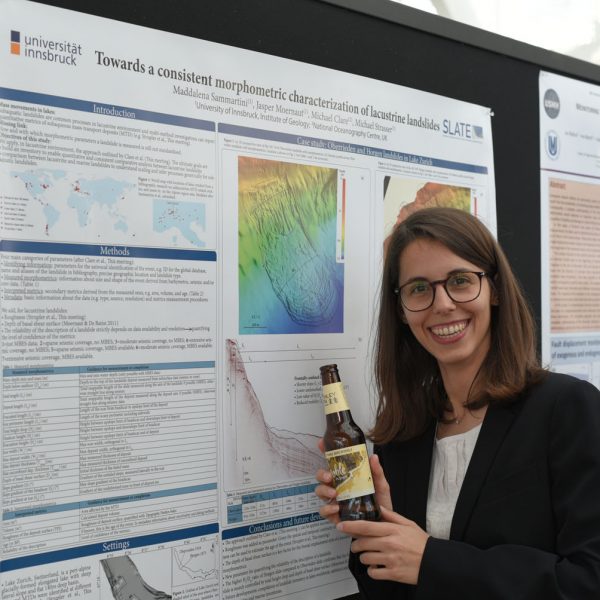
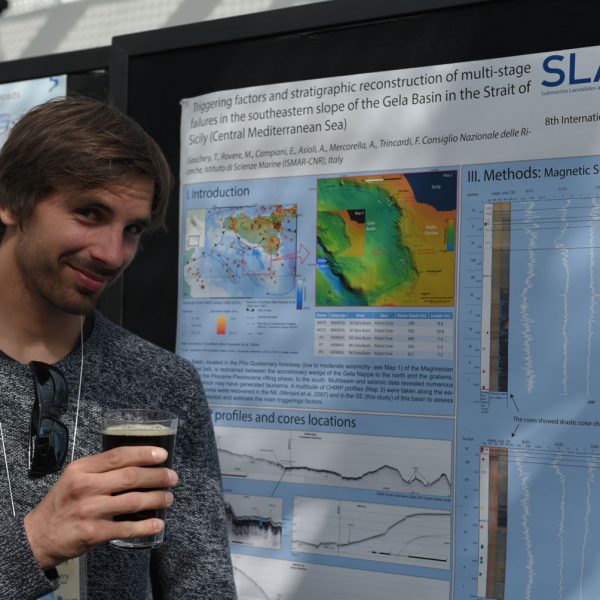
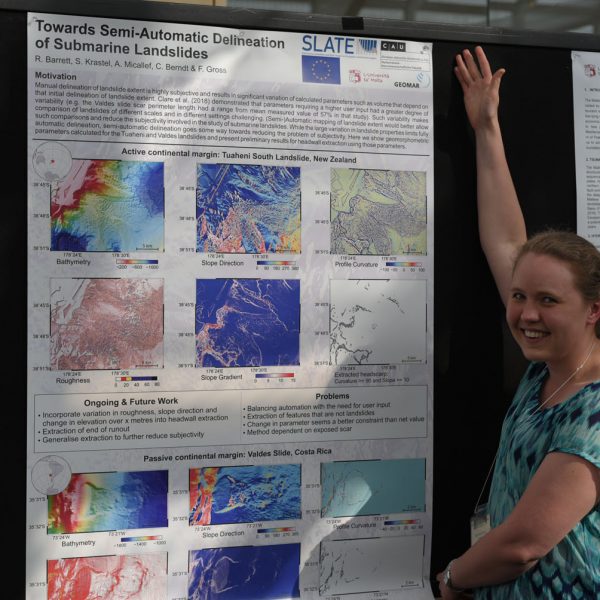
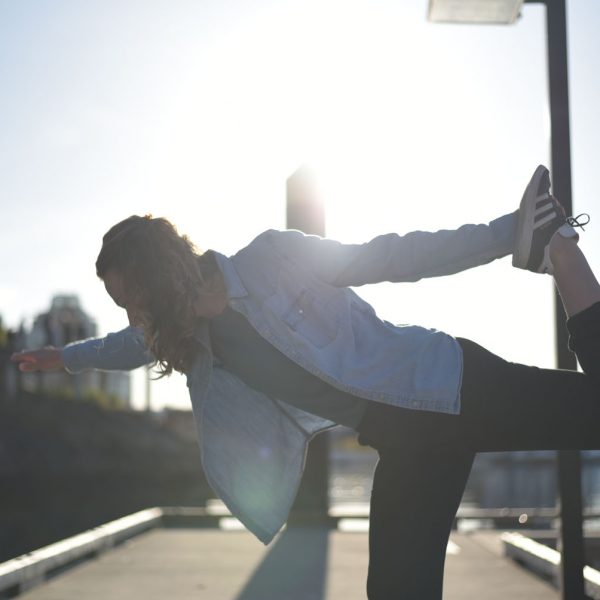
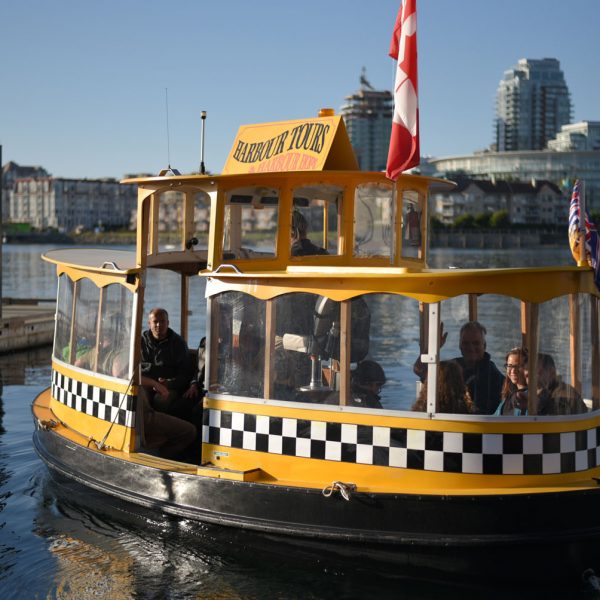
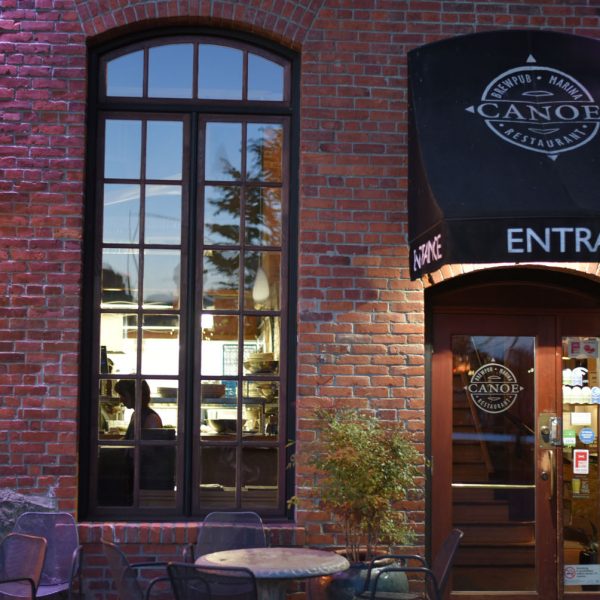
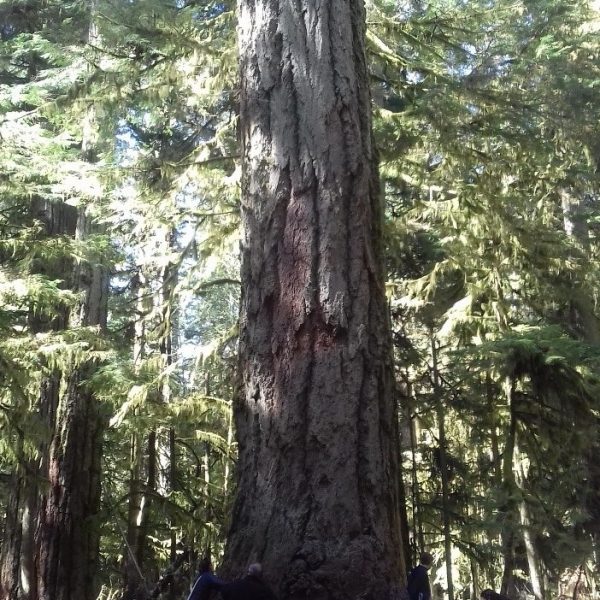
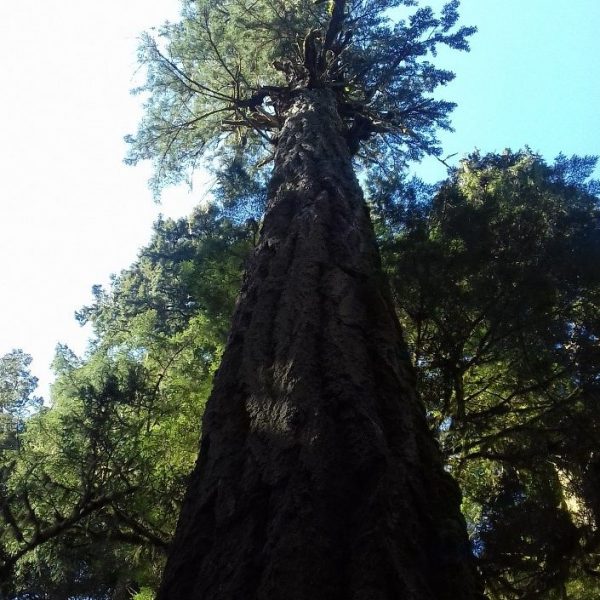
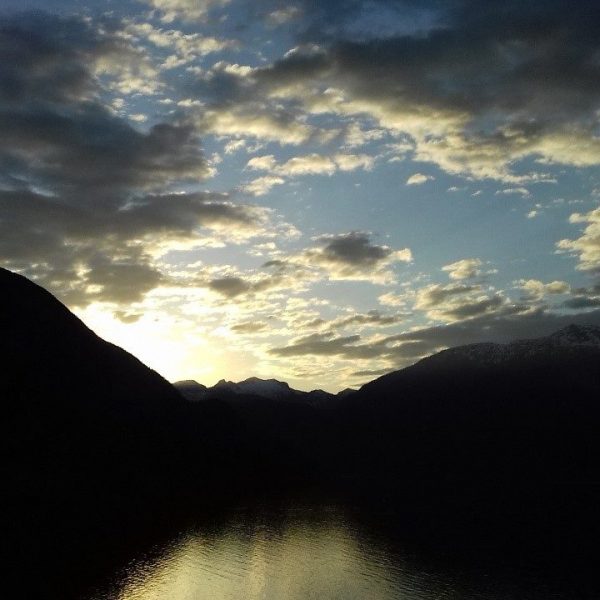
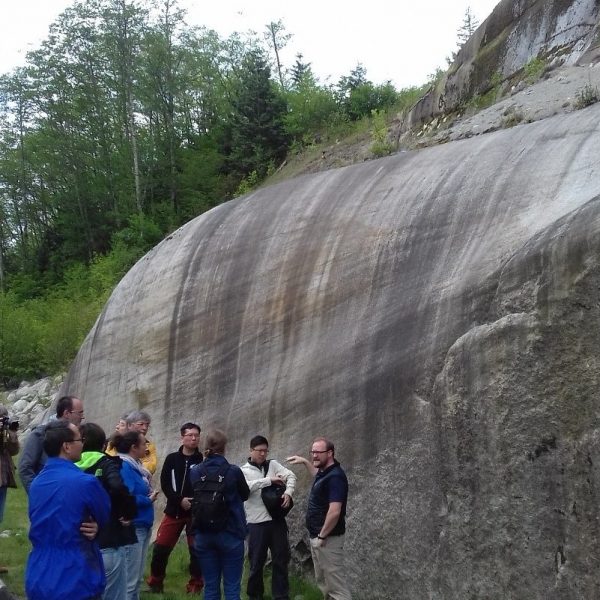
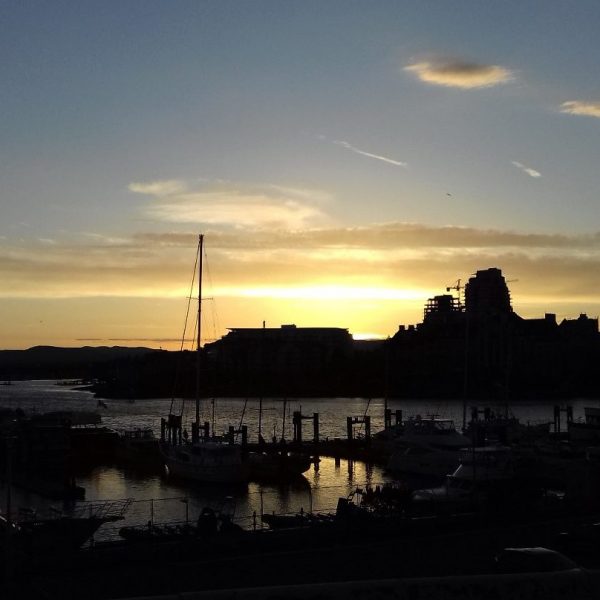
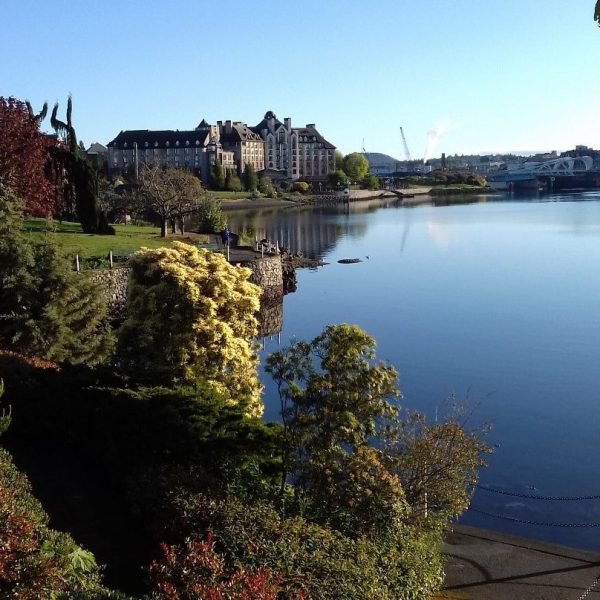
@ Lake Lucerne, Switzerland | 2018-03-25
Maddalena's Lake Lucerne cPT and coring Campaign
Maddalena Sammartini (ESR15) | @ Lake Lucerne, Switzerland (12-16 March 2018)
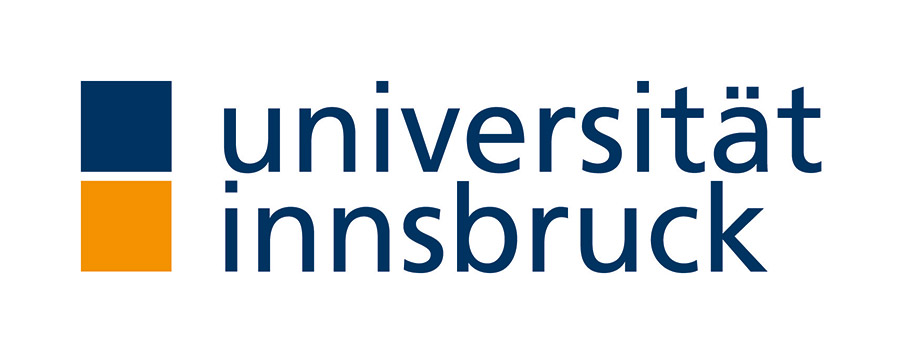
In March 2018, I took part in a cone penetration testing (CPT) and core campaign in Lake Lucerne, Switzerland. Since one of the aims of my PhD is to focus on the geotechnical characterization of lake basins, at the toe of landslide deposits, using Lake Lucerne as natural laboratory, this campaign has been a great opportunity to approach the CPT method and to acquire useful data on which I will work in the next years.
The main aim of our acquisition was to obtain CPT and core data in Lake Lucerne basin, in order to study and understand the role of frontal buttress in both initiation of sliding and frontal emplacement style. We selected four different study sites: three landslides and one area of possible future instability. In all sites, we acquired transects of CPT measurements (using a FreeFall-CPT lance with 5m and 6m long configuration) and cores. All cores were acquired using the free fall method.
Further steps ahead are core analysis in Innsbruck and one-week CPT processing and interpretation kick-off meeting in Bremen. Furthermore, we are planning another acquisition in Lake Lucerne at the beginning of September, right before the SLATE annual meeting. We aim to acquire other CPT, core and seismic data in the areas of interest.
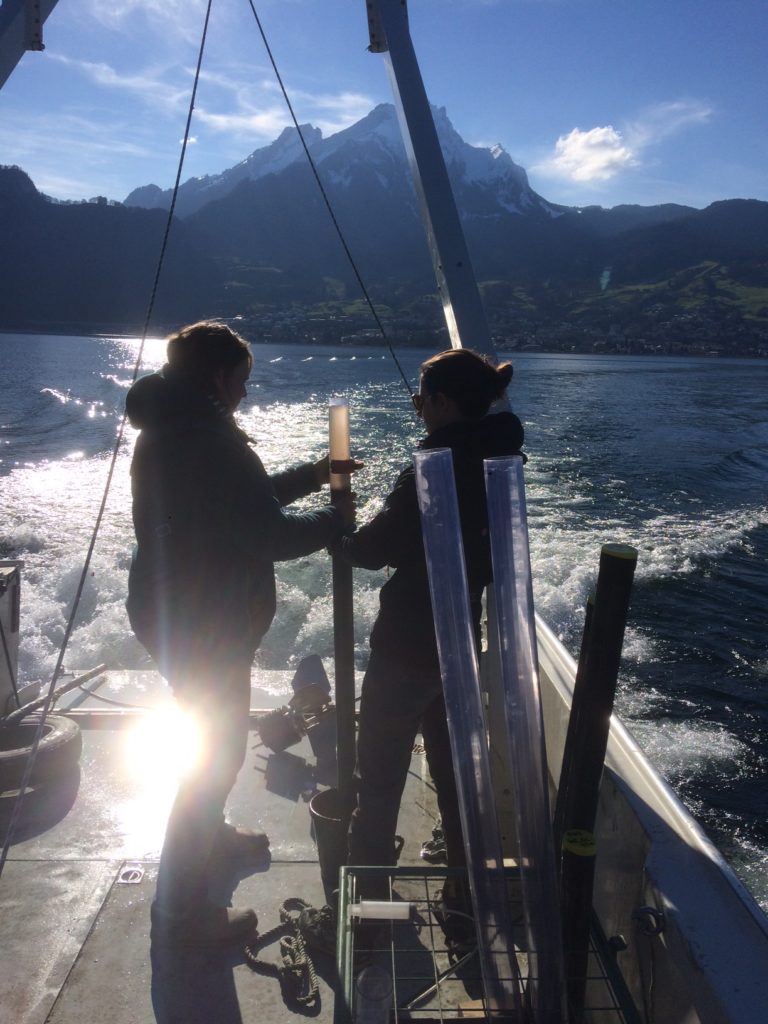
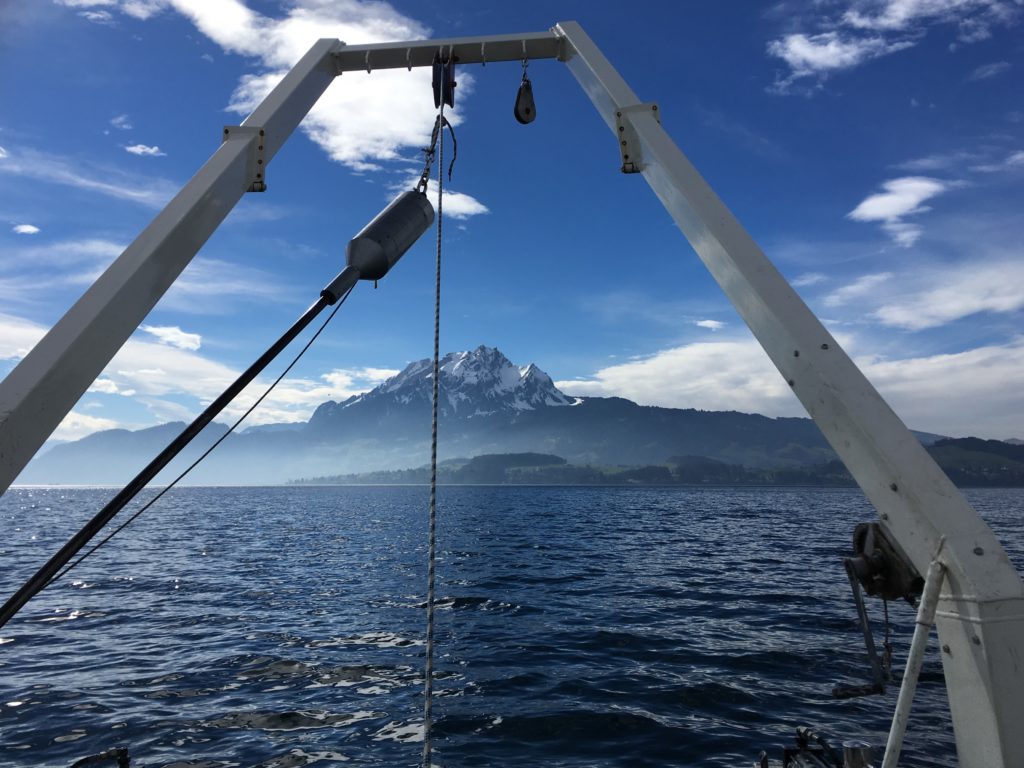 Location
Location
- Lake Lucerne, Switzerland
- 12 - 16 March
